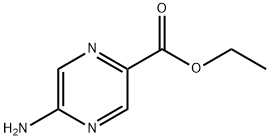When trying to figure out if methanol is polar and understand its polarity definition, you might have more questions. For example, how does the molecular structure of methanol relate to the concept of polarity? What are the key factors in the polarity definition that apply to methanol? And how can we experimentally verify methanol's polarity based on the definition?
Is Methanol Polar? Understanding the Definition of Polarity in Methanol
Related Products More >
-
- 67-56-1
- CNY 2400.0000
- 1ton
-
- 1883-75-6
- equest For Quotation
- 1kg
-
- 1883-75-6
- equest For Quotation
- 100g
-
- 1883-75-6
- equest For Quotation
- 1kg
-
- 1883-75-6
- equest For Quotation
- 500g
-
- 1883-75-6
- equest For Quotation
- 25kg
-
- 1883-75-6
- equest For Quotation
- 1kg
-
- 1883-75-6
- equest For Quotation
- 1000ton



 沪ICP备2021018848号-5
沪ICP备2021018848号-5

Now, let's talk about the key factors in the polarity definition that apply to methanol. Polarity is all about the distribution of electron density in a molecule. In methanol, the difference in electronegativity between oxygen and hydrogen is a major factor. The greater this difference, the more polar the bond. And since the molecule has this polar O - H bond and the overall shape of the molecule doesn't cancel out this charge separation, methanol ends up being a polar molecule. Another factor is the molecule's shape. Methanol has a tetrahedral arrangement around the carbon atom, with the OH group sticking out. This shape ensures that the partial charges don't balance each other, contributing to its overall polarity.
As for experimentally verifying methanol's polarity based on the definition, there are a few ways. One simple experiment is the solubility test. Polar substances tend to dissolve in polar solvents. If you take methanol and try to dissolve it in water, which is also a polar molecule, you'll find that they mix really well. This is because the positive end of the methanol molecule (the hydrogen in the OH group) is attracted to the negative end of the water molecule (the oxygen), and vice versa. Another way is to use an electric field. If you set up a simple apparatus with two charged plates and place a stream of methanol between them, you'll notice that the methanol stream bends towards one of the plates. This is because the polar methanol molecules are attracted to the opposite - charged plate, demonstrating its polarity. You can also look at the boiling point of methanol. Polar molecules generally have higher boiling points compared to non - polar molecules of similar size. Methanol has a relatively high boiling point for its molecular weight, which is another indication of its polarity. By understanding these aspects of methanol's molecular structure, polarity factors, and experimental verification, we can better answer the question of whether methanol is polar.
Methanol, or CH3OH, has a pretty simple structure. It's got a carbon atom at the center, with three hydrogen atoms attached and an oxygen atom with a hydrogen atom making up the hydroxyl group (-OH) at one end. Now, oxygen is a lot more electronegative than carbon or hydrogen, which means it hogs the electrons in a bond. This creates a partial negative charge on the oxygen and a partial positive charge on the carbon and hydrogens nearby.
The key factors in polarity definition that apply to methanol are the electronegativity difference between the atoms and the geometry of the molecule. Since oxygen is so much more electronegative than the other atoms in methanol, and it's positioned at one end of the molecule, this creates a dipole moment. A dipole moment is basically a separation of positive and negative charges, and it's what makes a molecule polar.
To experimentally verify methanol's polarity, you can use a few different methods. One common one is to measure its solubility in water. Polar molecules like methanol tend to dissolve well in polar solvents like water, because the positive and negative charges in the water molecules can interact with the charges in the methanol molecules. So, if methanol dissolves in water, that's a good sign it's polar. Another method is to use techniques like infrared spectroscopy to look at the bond vibrations in the molecule, which can give you clues about its polarity.
Now, what are the key factors in the definition of polarity that apply to methanol? Polarity is all about the distribution of electric charge in a molecule. If a molecule has areas of partial positive and negative charges, it’s polar. In methanol, the –OH group creates this uneven charge distribution, and because the molecule isn’t symmetrical (the –OH sticks out in one direction), the polarity isn’t canceled out. This makes methanol a polar molecule, which is why it mixes so well with water and other polar solvents.
So, how can we experimentally verify methanol’s polarity? One way is to test its solubility. Polar substances dissolve in other polar substances, so if you mix methanol with water, it should dissolve completely. You can also test its behavior in an electric field. If you place methanol between two charged plates, the molecules will align themselves with the field because of their polarity. Another method is to measure its dielectric constant, which is a fancy way of saying how well it can store electrical energy. Polar molecules like methanol have high dielectric constants because they can align with electric fields.
In short, methanol is polar because of its –OH group, which creates an uneven distribution of charge. This polarity makes it mix well with other polar substances and gives it unique properties in electric fields. By testing its solubility, behavior in an electric field, or dielectric constant, you can experimentally confirm its polarity. It’s a great example of how molecular structure directly impacts a substance’s behavior!